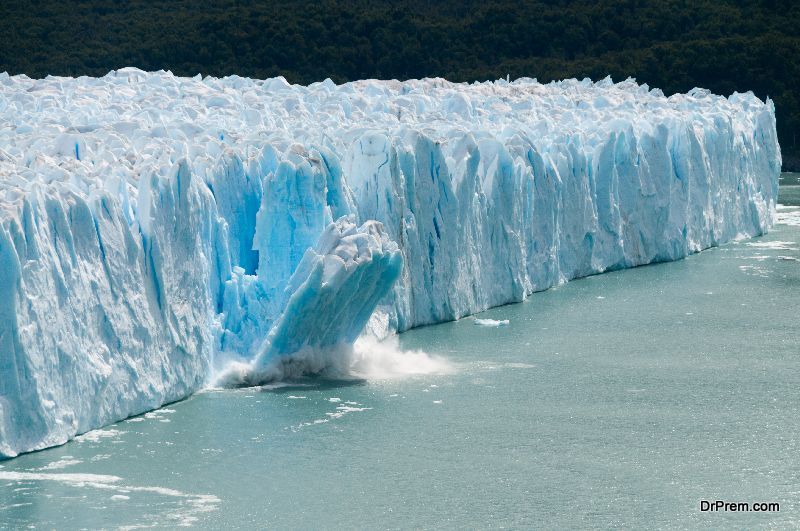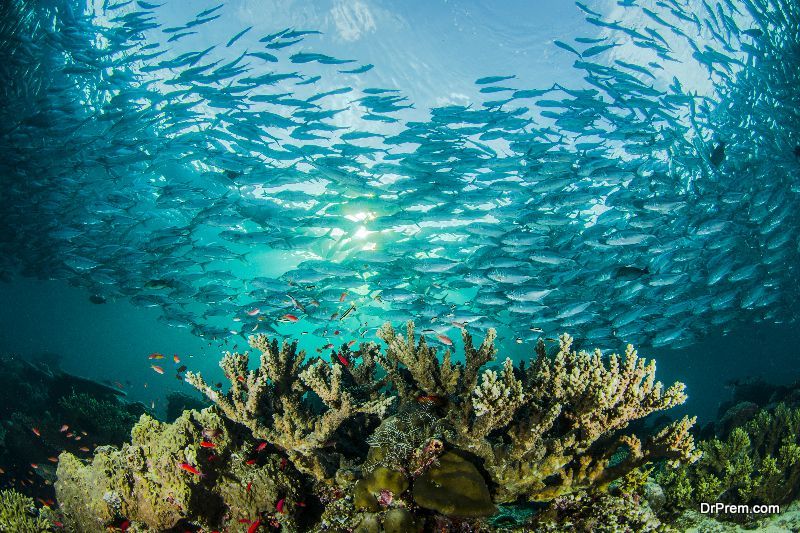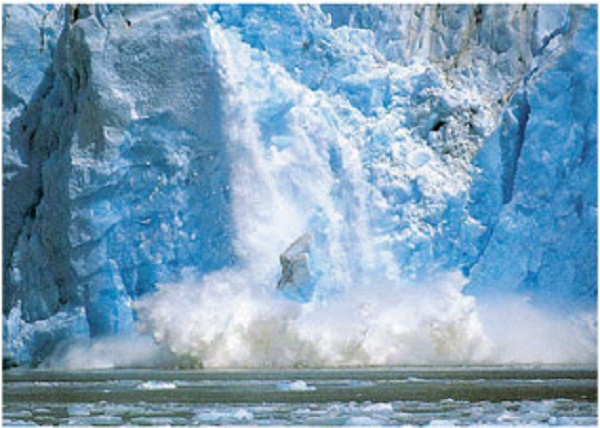The knockout punch of global warming is clearly reflected in the massive bleaching of the coral reefs, causing a wipeout of the colonies. This has been observed in a recent study published in Journal Science after bringing together the observations of more than 100 global reefs since the 1980s when such bleaching events were hardly noticed.
The diversely colored undersea colonies created by tiny corals have been playing a major role in preserving the marine ecosystem sheltering millions of marine organisms.
Bleaching- The killer of reefs:
The calcium carbonate structures today almost stand lifeless and fragile as a result of a phenomenon called coral bleaching, caused by the rising of ocean temperatures. The effect – A looming environmental disaster with the likely disappearance of a number of aqua-marine species.
Corals are just as important for the sustenance of marine life as rainforests are important for the survival of animals. Just as speedy depletion of rainforests led to the extinction of many animal species, coral reef bleaching is heading towards an almost similar devastating effect. Large populations of fish, lobsters, crabs, worms, and shellfish would simply vanish from the face the of the oceans.
The effect of global ocean warming:
The tiny corals live in clusters among the limestone structures secreted by them. Millions of such tiny organisms dwelling in a cluster or “tree” contain a small quantity of photosynthetic algae called zooxanthellae that provides them the required nourishment.
When the ocean water gets warmed up even by a few degrees, these coral polyps release their algae in response to the stress, thereby turning the entire cluster colorless. If the sea water does not cool down fast enough, these corals are forced to starve, get infected and die out eventually.
Back-to-back bleaching leading to more destruction:
Coral reef bleaching is reversible, provided the time gap between two successive bleachings is at least 10-15 years. It is not that bleaching was not there in the 1980s, but it was rare and it occurred with a gap of 25-30 years.
The first mass bleaching was observed in 1998 along Australia’s Great Barrier Reef (GRB). After that, it seems there was no stopping to it. GBR faced bleaching three more times in 2002, 2016, and 2017. These two back-to-back bleaching events have killed almost 50% of the corals.
Guam is another hard-hit region that experienced 8 severe bleaching events since 1994- four of which occurred in the last five years. The reefs of Florida Keys, Puerto Rico, and Cuba were hit seven times. Only 6 out of the 100 coral reefs were spared from this massive bleaching; four from Australia, one in the Indian Ocean, and the other in South Africa.
El Nino and La Nina Effect:
Mass coral bleaching is said to have risen due to the El Nino effect– the warm ocean current warming up the water temperature by a few degrees. In 1982-83, it bleached the coral reefs in Costa Rica, Panama, and Columbia, killing about 70-90% of the corals.
Many successive bleaching events later were initiated by El Nino that warmed up the Pacific Ocean even more. But the back-to-back mass bleaching of GBR in 2016 and 2017 occurred during initiation of La Nina- the cold ocean current which cools off the water temperature.
This strongly indicates that the fast warming of ocean waters due to greenhouse gas emission is more destructible as the cold ocean current failed to cool the sea water to the desired level. Therefore, only El Nino is not to be blamed for coral bleaching. Man-made greenhouse gas emission is also accountable for it, and more so.
Growing population of star-thorn fish compounding the bleaching disaster:
Scientists also noticed a sudden population growth of star-thorn fish eating up the GBR on December’17. The Australian government took quick action in killing these spiky marine predators and is planning further killing this month.
This predator consumes corals almost equivalent to its body diameter overnight. A huge population can destroy a lot of corals in a short time span. This outbreak of star-thorn fish is not new.
The GBR has already experienced it four times. But every time, a healthy population of herbivorous fish tackled this issue. The change in the nutrient content of seawater contributed to the previous outbreaks. However, the reason behind the recent one is yet to be established.
Fighting coral beaching:
A dramatic reduction in greenhouse gas emission can be the only way to preserve the existing reefs. If this can be restricted according to the Global 2015 Paris Climate Agreement, the Great Barrier Reef can be saved from its impending doom.
Cooler environment means cooler seawater, less bleaching events and more chances of bleaching reversal. Overfishing of the key herbivorous fish should also be stopped to prevent the growth of coral predators.







